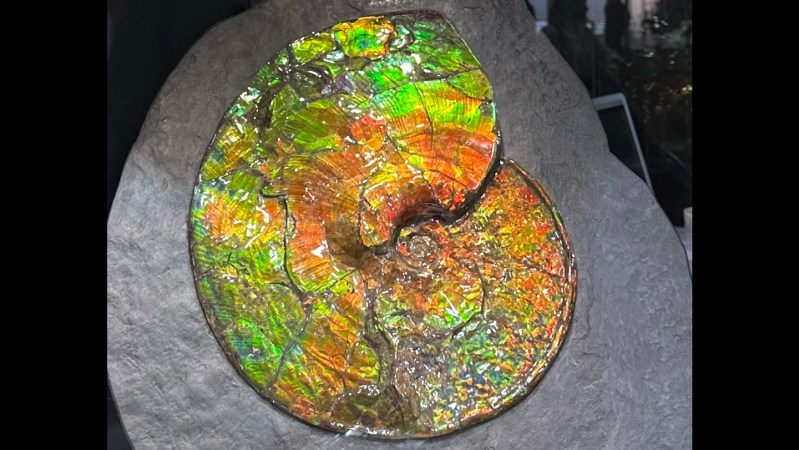Researchers have solved a long-standing mystery surrounding the vibrant colors of rare ammolite gemstones, known for their striking rainbow shimmer. The findings, published on October 30, 2023, in Scientific Reports, reveal that the colors arise from specific structural properties of the fossilized shells of ancient ammonites, a group of extinct squid-like creatures.
Decoding the Colorful Mystery
Ammolite gems, derived from the fossilized layers of ammonites, exhibit a captivating array of hues. Previous studies indicated that the secret to their vivid appearance lay in the layers of nacre, also known as mother-of-pearl. However, not all ammonite fossils display the same brilliance. To pinpoint the reasons behind this phenomenon, a team led by materials scientist Hiroaki Imai from Keio University in Japan undertook a detailed examination of the internal structures of ammolite and other nacreous shells.
The team focused on the aragonite crystal plates that compose the nacre. Through the use of advanced electron microscopes, they analyzed samples from the 75-million-year-old Bearpaw Formation in Alberta, Canada. Their research uncovered that ammolite’s vibrant colors are a result of light reflecting off aragonite layers that are uniformly thick, separated by gaps measuring approximately 4 nanometers.
Significance of Structural Gaps
The team discovered that the thickness of these aragonite plates plays a crucial role in color production. Thinner plates reflected shorter wavelengths, producing deep blues, while thicker plates reflected longer wavelengths, resulting in richer reds. Notably, the microscopic structure of ammolite differed significantly from that of duller nacres found in other mollusks, such as nautilus and abalone.
“I was astonished to learn it was the excavated fossil itself,” said Imai, reflecting on his initial encounter with ammolite at a mineral fair in Tokyo.
In their findings, the researchers noted that the air pockets in ammolite were devoid of organic material, which had been removed during the fossilization process. In contrast, abalone shells contained 11-nanometer layers of organic matter between their plates, while a dull ammonite fossil from Madagascar exhibited plates that had collapsed together.
Simulations conducted by the team confirmed that the 4-nanometer gaps are optimal for producing bright, distinct colors. More tightly packed plates resulted in duller appearances, while wider gaps blurred the color spectrum. Uniformity in the thickness of the layers across a single piece of ammolite contributed to its distinct coloration.
As the research continues, Imai’s team plans to investigate silica gemstones, particularly opals, which have also been noted for their vivid structural colors. “Some types of opal exhibit vivid structural colors,” Imai explained, indicating that the principles discovered in ammolite may apply to these gemstones as well.
This study not only enhances the understanding of ammolite’s aesthetic properties but also sheds light on the broader field of gemology, offering insights into how geological processes contribute to the beauty of natural gemstones.







































































